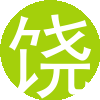[解析]
(1)细节理解题。由本文第二段A sentence should contain no unnecessary words,a paragraph no unnecessary sentences,for the same reason that a drawing should have no unnecessary lines and a machine no unnecessary parts.(一个句子不能有多余的单词,一个段落不能有多余的句子,就像一幅画不能有多余的线条,一台机器不能有多余的零件一样。)可知,《风格的要素》这本书提倡不需要的词不应该出现在句子里。故选B。
(2)段落大意题。由本文倒数第三段Almost every text that has been translated into English from Chinese,(or that has been written directly in English by a native speaker of Chinese) contains unnecessary words.(几乎每一篇从中文翻译成英文的文章(或由以中文为母语的人直接用英文写成的文章)都含有不必要的词。)倒数第二段Read anything that has been published in English for foreign readers—a magazine article,a news story,an advertisement—and you are likely to find unnecessary words.(阅读任何为外国读者发表的英文文章——一篇杂志文章、一篇新闻报道、一则广告——你很可能会发现不必要的单词。)以及最后一段Unnecessary words can be any part of speech—nouns,verbs,adjectives,adverb prepositions,articles (冠词),and so on.(不需要的词可以是言语的任何部分——名词、动词、形容词、副词介词、冠词等等。)可知,最后三段的主旨是多余的单词是一个常见的问题。故选A。
(3)观点态度题。由本文最后一段In the following chapters we shall consider the important types,starting with unnecessary nouns and verbs,which often go hand in hand.(在接下来的章节中,我们将考虑重要的类型,从不必要的名词和动词开始,它们通常是齐头并进的。)可知,作者认为多余的词语至关重要。故选B。
(4)细节理解题。由本文第三段It follows that any words which perform no useful function in the sentence—that is,which add nothing to the meaning—should be edited out.(由此可见,任何在句子中不起任何作用的词——也就是说,对句子的意思没有任何增加作用的词——都应该被删去。)最后一段Unnecessary words can be any part of speech—nouns,verbs,adjectives,adverb prepositions,articles (冠词),and so on.(不需要的词可以是言语的任何部分——名词、动词、形容词、副词、介词、冠词等等。)可知,A选项名词speed多余、B选项agriculture 多余;C选项that多余,D选项不包含不必要的单词。故选D。
